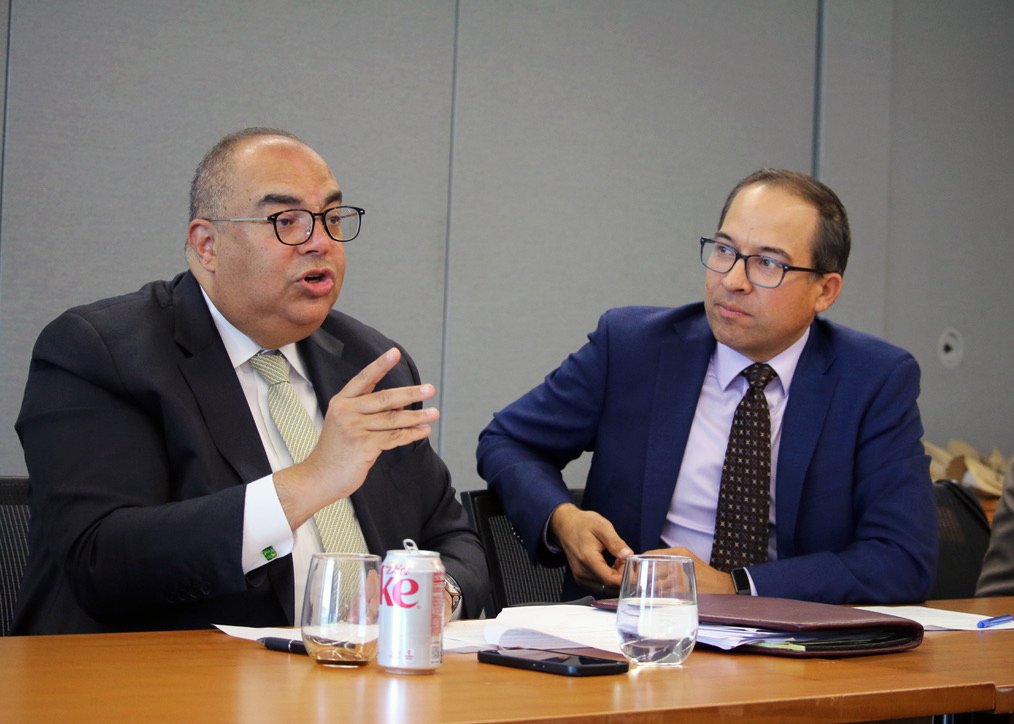Article summary: Policy brief for T20 Brasil
In 2023, the Atlantic Council’s Climate Resilience Center established a multisectoral dialogue on adaptation finance. Banks, insurers, and investors joined public sector stakeholders to develop solutions. By beginning to align on standards, metrics, data, and financial instruments, these discussions made clear and significant progress in the world of climate finance.
However, these discussions also clarified the key challenges for a more robust adaptation economy. When countries are unable to equitably or affordably access climate funds, it compounds existing climate burdens.
Building on these learnings, the Climate Resilience Center’s Senior Director Jorge Gastelumendi and Climate Policy Initiative’s Malini Chakravarty developed a new policy brief for the Brazilian T20 process. The T20 occurs in parallel to the annual G20 summit. It brings together think tanks and research centers to build the knowledge base.
As a part of that effort, this policy brief outlines key approaches for a more sustainable and inclusive financial architecture.
Key recommendations
1. The adaptation finance gap presents clear “systemic risks to global economic stability.” Private sector actors must have clear and concrete pathways to bridge this gap.
The policy brief unveils the economic burden of the adaptation gap. The most climate-vulnerable countries could lose over 100 percent of their GDP to climate disasters. Further, every degree Celsius increase in warming drops global GDP by 12 percent. Despite these sobering facts, less than 5 percent of climate finance goes to climate adaptation. This not only puts millions of people at risk, but also comes with a heavy cost to the world economy.
As climate impacts become more frequent and intense, many institutions are developing transition plans. However, even as the private sector makes this a priority, private capital is still dramatically underutilized. There is a clear opportunity to include climate adaptation and resilience in these transition plans and mobilize private sector funds. Public sector actors must also align on how to engage with and leverage private capital for impactful adaptation solutions.
2. Institutions like the G20 can mobilize access to climate adaptation finance.
To date, adaptation finance has been largely ad hoc. In fact, it is individuals who contribute the most to adaptation finance. Small farmers—especially in the Global South—contribute an estimated $368 billion of their own income to adaptation and biodiversity.
As these conversations on adaptation finance accelerate, the G20 is uniquely positioned to develop a centralized financial architecture. This architecture must align on working definitions for adaptation and resilience, institutionalize and expand data, and set clear goals. By creating a robust and central framework, the G20 can set “a global standard for an adaptation and resilience finance taxonomy.” However, the authors noted that the disconnect between the private and public sector can make these efforts less impactful. Therefore, private finance institutions must be part of these efforts. They can readily identify risks and viable opportunities, informing better plans and processes.
3. Many vulnerable countries cannot access affordable climate finance, despite bearing a heavy climate burden. Multilateral development banks (MDBs) and international finance institutions (IFIs) must facilitate access to concessional funding, keeping the context of these countries in mind.
The Kyoto Protocol established the Adaptation Fund to lead on grant-based financing for adaptation. To date, it has committed over $1.2 billion to 176 distinct adaptation projects. Therefore, the authors recommend leveraging and scaling the Fund, positioning it as the central mechanism for adaptation finance.
In considering how to more equally distribute financing, key stakeholders must also enable better access to data, resources, facilities, and climate risk evaluations.



